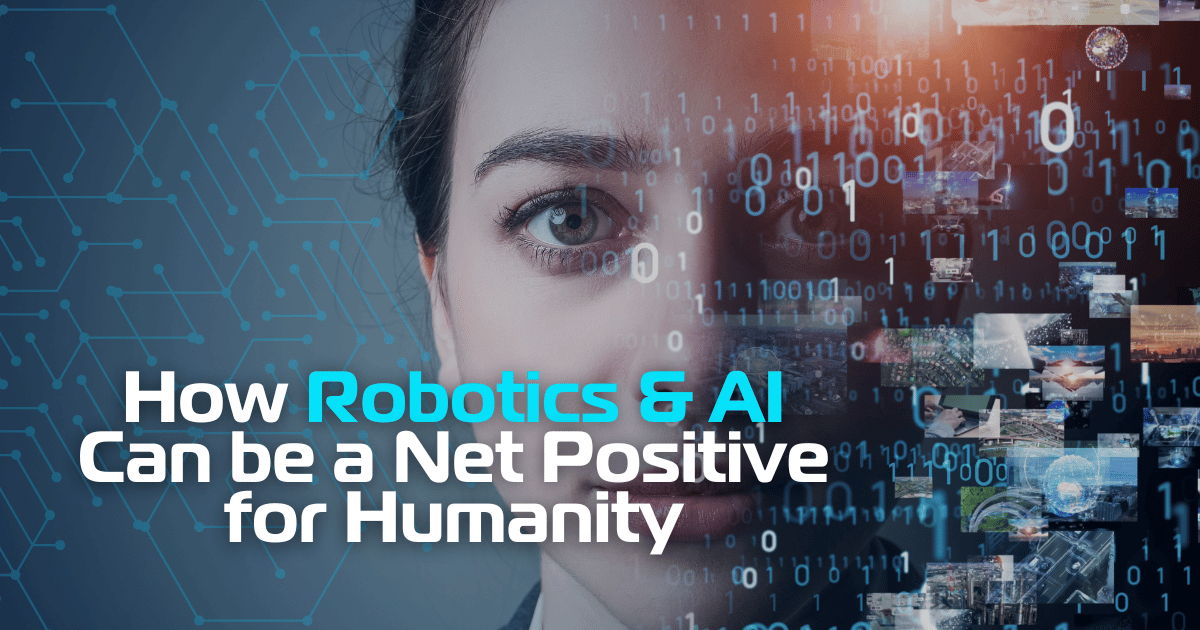- The Weekly Nugget
- Posts
- How Robotics and AI can be a Net Positive for Humanity
How Robotics and AI can be a Net Positive for Humanity
3 Rules of thumb for rating their contribution to humanity

As someone whose worked for several leading robotics brands, and consulted for the robotics industry for almost a decade now, I’m a proponent of innovation. At the same time, I have very firm opinions on robotics & AI innovations and how some of them can be a severe negative for humanity. There are some robotics & AI innovations should be limited or banned all together.
However, today I’m focusing on discussing robotics & AI innovations that are a net positive, and the 3 rules of thumb I use to decide whether I think a robotics or AI product should be adopted in mass by economies.
These 3 rules of thumb are: Does it do the work, but not take the job?, does it perform highly undesirable tasks efficiently?, and does it boost company productivity in cost centered activities?
It does the work, but doesn’t take the job
The first rule of thumb for evaluating whether a robotic or AI product is a net positive for humanity is understanding if it can do the work, without taking the job from fellow humans. This principle can be applied to a number of products across all industries whether its focused on consumers, the service sector, factories, or the commercial market.
Several great examples of this are home products like Dolphin robotic pool cleaners, Roomba vacuums, automatic laundry folders, Google AI for web search, and Siri. These products perform tasks that we would most likely be doing ourselves. They do the work of cleaning the pool, keeping our floors tidy, folding laundry, assisting in what could have been time consuming web searches, and assist us with questions on demand from our mobile device.
In reality, most people are still paying the pool guy to come monthly, they aren’t going to hire someone to help them do a web search or pay a personal assistant to auto dial a friend. These types of robotics & AI innovations do the work, provide a ton of value for the consumer, and they replace a minimum number of actual jobs.
As an experienced marketer in the home products industry, I’ve found that robotic pool cleaners have almost zero negative impact on pool maintenance businesses, and Roombas haven’t replaced house keepers. If you focus on identifying products that fulfill the “do the work, but don’t take the job” - as an economy, we’ll gain the most from robotics & AI without affecting our fragile job market.
Performs highly undesirable tasks efficiently
My second rule of thumb is “does this robotics or AI innovation perform a highly undesirable task efficiently?”. There are some jobs people don’t want to do. But this isn’t that main point of what I mean. Think of jobs that are low paying, highly monotonous, might have environmental conditions that are unbearable, are low margin businesses, require speed and efficiency, and are a needed sector in our economy.
One example of this is trash sorting. These are jobs that are low paying, the environment smells, and people need to be quick identifying trash and placing it in the correct bin for recycling as it moves across the conveyor belt at the sorting facility. Today there are trash sorting robots utilizing AI to sort trash with incredible speed and accuracy.
In terms of trash sorting robots, this is an area that we should welcome innovations in robotics & AI. Robots in this space are a net positive for businesses and our economy. Especially, at a time when many businesses are having challenges filling minimum wage roles.
Boosts company productivity in cost centered activities
The 3rd rule of thumb is “does this robotics or AI innovation boost my companies productivity for cost centered activities?”. This 3rd criteria, we’re not really talking about building widgets or providing services, this is regarding areas of a business that doesn’t generate a profit (cost centers), but desperately needs to have a high level of quality and efficiency in what they do.
A great example of this is at hospitals. People see doctors and nurses in mass 24/7/365 at these large facilities, however, there are critical tasks that need to happen that aren’t patient facing.
1 in 31 patients that visit a hospital get sick by actually going to the hospital according to the CDC. This is what’s called an HAI (Hospital Acquired Infection). One HAI can cost a hospital tens of thousands of dollars in unexpected costs, and this is a weekly problem for most hospitals.
Environmental health and safety teams are tasked with cleaning and disinfecting patient rooms, operating rooms, lobbies, dialysis units, and other areas high traffic areas of the hospital every day, around the clock.
One product that is highly efficacious and efficient at inactivating harmful pathogens are autonomous UV-C disinfection robots. These robots are used as an adjunct to manual surface cleaning, and are an additional layer of safety. However, they can make a big impact when implemented into a hospitals cleaning and disinfection protocols.
These robots not only help these maintenance teams in there fight to kill more pathogens, but they can also automate what were manual tasks saving the workers valuable time each day to focus on their next critical cleaning task.
UV-C disinfection has been around since the early 1900’s, but with the advent of robotics and AI, UV-C disinfection devices are now making a big autonomous impact. They are improving the maintenance teams performance and the hospital environment for patients without replacing jobs.
Maybe you’re a politician, executive, or someone considering working for a company in robotics & AI. I hope you have found these 3 rules of thumbs helpful in understanding different ways to evaluate the different robotics & AI products contribution to humanity.